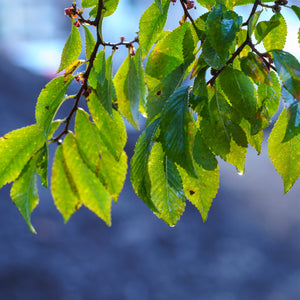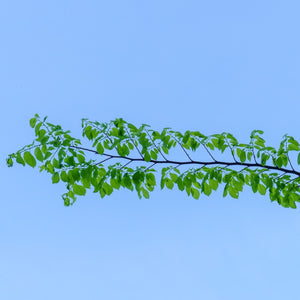The Elm Guide
Elm trees provide a majestic and timeless presence in any landscape. With their towering height, distinctive bark, and graceful foliage, elm trees demand attention and contribute an air of grandeur to gardens and outdoor areas. These impressive trees are celebrated for their resilience and can flourish in a range of environments with appropriate care and upkeep. Whether your goal is to establish a serene woodland escape or introduce a striking centerpiece in your garden, elm trees stand out as an exceptional choice.
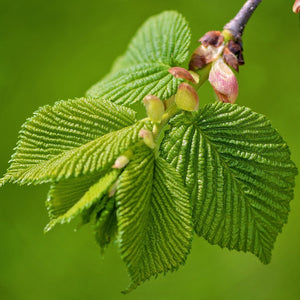
About
Elm trees, belonging to the Ulmus genus, represent a diverse group of deciduous trees celebrated for their striking presence and ecological importance. With numerous species distributed across the temperate regions of the Northern Hemisphere, including North America, Europe, and Asia, elm trees are vital components of various ecosystems. These remarkable trees are characterized by their unique features and significant role in supporting local flora and fauna.
One of the notable characteristics of elm trees is their distinctive bark, which can range from deeply furrowed to smooth and grayish, offering an intriguing visual contrast to their lush foliage. Elm leaves are typically elliptical with serrated edges, displaying vibrant shades of green during the growing season. When autumn arrives, elm trees undergo a breathtaking transformation, showcasing a spectrum of warm colors, including brilliant yellows, fiery oranges, and rich coppers.
Elm trees are renowned for their ecological importance, providing essential food and shelter for a diverse range of wildlife. Their small, inconspicuous flowers, borne in clusters, contribute early-season pollen for bees and other pollinators. The seeds of elm trees, encased within distinctive winged structures, serve as a valuable food source for numerous birds and mammals, contributing to local biodiversity.
These versatile trees exhibit adaptability to various soil types and environmental conditions. While they tend to favor well-drained soil with ample moisture, elm trees can flourish in both full sun and partial shade. Their capacity to thrive in a variety of climatic conditions and their moderate growth rate make them a favored choice for landscaping endeavors.
Whether employed as an elegant focal point in a garden, grouped to establish a natural windbreak, or integrated into mixed borders, elm trees infuse an aura of grace and beauty into any landscape. Notable species of elm trees include the American elm (Ulmus americana) and the European field elm (Ulmus minor), both admired for their impressive aesthetics and substantial ecological contributions.
By selecting and nurturing elm trees in your landscape, you not only augment the visual allure of your outdoor space but also contribute to the preservation of these remarkable trees and the diverse ecosystems they support.
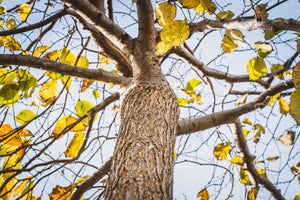
Planting
Elm trees have specific planting requirements to ensure their successful establishment and growth. Here are some general guidelines for planting and caring for elm trees:
Soil: Elm trees thrive in well-draining soil rich in organic matter. They typically prefer slightly acidic soil with a pH between 6.0 and 7.0. Prepare the planting site by loosening the soil and incorporating compost or organic matter to enhance drainage and soil fertility.
Sunlight: Elm trees prefer full sun to partial shade. Choose a location that receives at least six hours of direct sunlight each day. They can tolerate some shade, especially in hot and arid climates.
Watering: Proper watering is essential, especially during the initial establishment of elm trees. Water the tree deeply immediately after planting and continue to provide regular irrigation throughout the first year. Water deeply and thoroughly once or twice a week, adjusting the frequency based on rainfall and soil moisture levels. Avoid overwatering, as excessive moisture can lead to root rot.
Mulching: Apply a layer of organic mulch around the base of your elm tree to conserve moisture, suppress weed growth, and regulate soil temperature. Use wood chips, bark, or compost as mulch, making sure to keep it a few inches away from the trunk to prevent moisture accumulation.
Pruning: Elm trees typically require minimal pruning. Remove any dead, damaged, or crossing branches to maintain a strong and balanced framework. Prune during late winter or early spring while the tree is dormant, before new growth emerges.
By following these basic planting and care guidelines, you can ensure the successful establishment and healthy growth of your elm trees, allowing them to thrive and enhance your landscape for years to come.
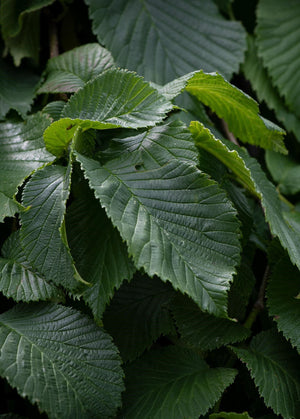
Care
Elm trees require specific care to ensure their optimal growth and health. Here are some general guidelines for the care of elm trees:
Watering: During the growing season, provide moderate watering to your elm trees. Aim for about one inch of water per week, adjusting as needed based on rainfall. It's crucial to water deeply and thoroughly to encourage deep root growth. Avoid shallow watering, which can lead to stress and dehydration. In periods of drought or high temperatures, additional watering may be necessary to keep the soil adequately moist.
Pruning: Elm trees typically do not require extensive pruning. However, it's advisable to remove any dead or damaged branches to maintain the tree's overall health and appearance. You may also shape the tree to achieve the desired size and form. Prune during late winter or early spring before new growth emerges. Use clean, sharp pruning tools to minimize the risk of damaging the tree. Deadheading spent flowers can also encourage new growth and potentially trigger a second blooming.
Fertilizing: Fertilizing can promote healthy growth and foliage in elm trees. Apply a balanced, slow-release fertilizer in the spring or early summer, following the recommended application rates and timing provided by the manufacturer. Avoid over-fertilizing, as it can harm the tree's roots. When in doubt, use less fertilizer to prevent overfeeding.
Soil and Sunlight: Elm trees prefer well-drained, moist soil and thrive in full sun exposure. While they are relatively adaptable to different soil types, providing well-draining soil is essential for their optimal growth. Additionally, mulching around the base of the tree helps retain moisture and regulate soil temperature.
Pests and Diseases: Elm trees are generally resistant to pests and diseases, but it's important to be vigilant for common issues like Dutch elm disease and elm leaf beetles. If you observe any signs of damage or disease, promptly treat the tree with appropriate remedies to prevent further issues.
By following these basic care guidelines, your elm trees will thrive, providing beauty, shade, and a majestic presence in your garden for years to come.
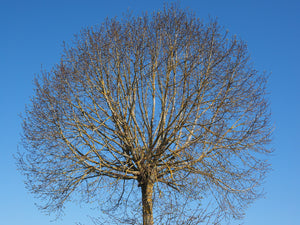
How To Use
Elm trees offer versatility and can be used in various ways to enhance your landscape. Here are some recommendations based on their characteristics:
Focal Point: Elm trees possess a remarkable presence, making them an ideal choice as a focal point in your landscape. Plant a single elm tree in an open area to showcase its elegant form and captivating bark. Alternatively, create a stunning visual impact by planting a group of elm trees together.
Shade Provider: With their expansive canopy, elm trees provide excellent shade. Plant them strategically near outdoor seating areas, patios, or decks to create a cool and comfortable space where you can relax and enjoy the outdoors.
Windbreak: Elm trees, with their dense foliage and robust growth, can serve as an effective windbreak. Plant them in a row to shield your garden or home from strong winds, providing a natural barrier and protection.
Privacy Screen: Utilize the lush foliage of elm trees to create a natural privacy screen in your landscape. Plant them in a row along your property line to establish an attractive and functional barrier that enhances both privacy and aesthetics.
Wildlife Habitat: Elm trees contribute to the overall biodiversity of your garden by attracting various wildlife species. Birds and other animals are drawn to the seeds and shelter provided by elm trees. Create a welcoming habitat by planting elm trees and enjoy the sight and sounds of wildlife flourishing in your outdoor space.
When selecting elm trees for your landscape, consider their growth rate and environmental requirements. Ensure they are planted in areas that receive full sun or partial shade and provide well-drained soil. With their majestic form, captivating bark, and functional benefits, elm trees are an exceptional addition that will enhance the beauty and functionality of your outdoor environment.
Conclusion
Elm trees are a captivating and versatile addition to any landscape. Their remarkable presence, distinctive foliage, and ecological significance make them a sought-after choice for various settings. By adhering to proper planting and care practices, you can enjoy the beauty and benefits of elm trees in multiple ways, whether it's creating a picturesque driveway or providing a cool retreat in your backyard. Whether you choose to showcase their elegance as a focal point or incorporate them into a larger design, elm trees offer endless possibilities to enhance the allure of your outdoor space. With dedication and care, you can create a breathtaking landscape that will bring you lasting joy for years to come.

